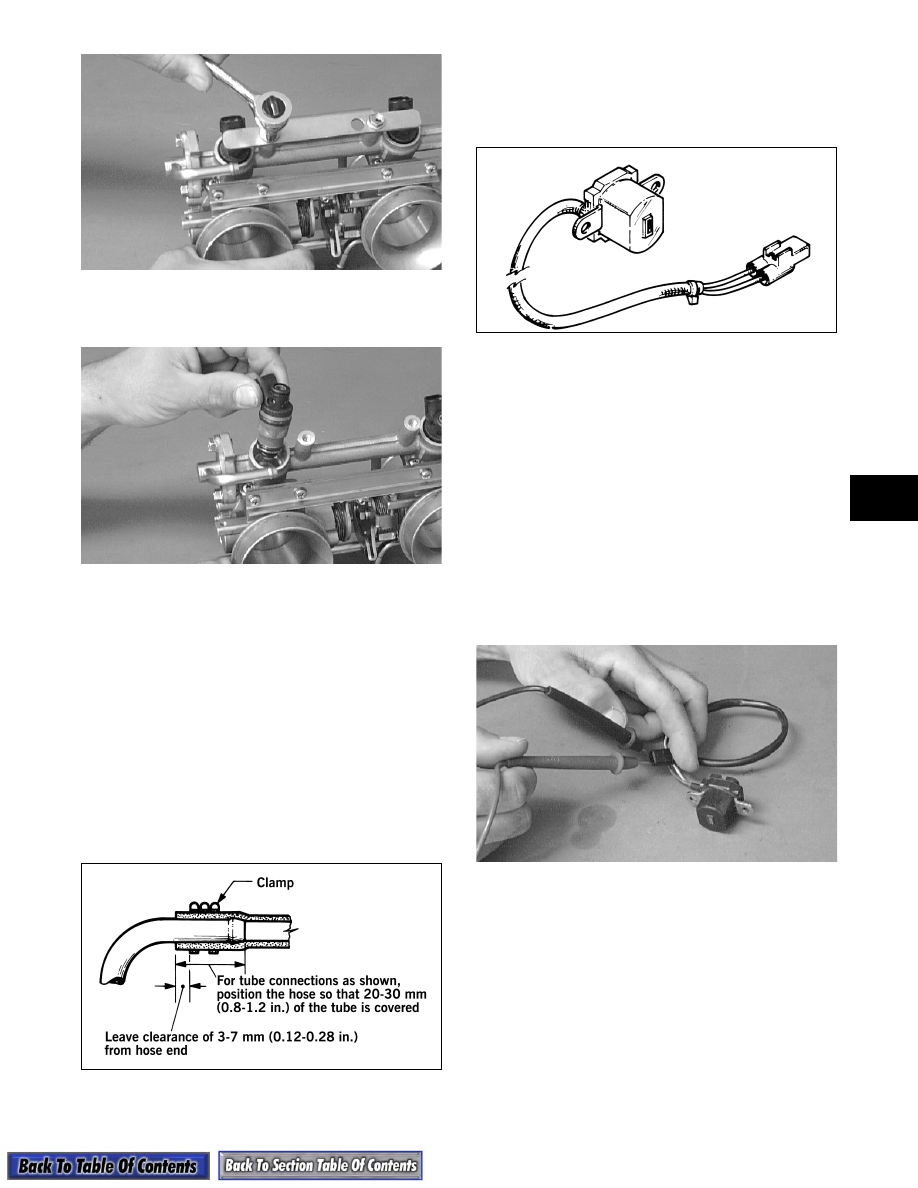Snowmobile Arctic Cat (2002 year). Manual - part 64

4-49
4
AO145D
4. Remove the fuel injectors from the throttle body
assembly.
AO146D
Installing
1. Apply a light coat of oil to all O-rings; then install
the upper and lower O-rings onto each injector.
2. Install the injectors into the throttle body
assembly.
3. Place the injector hold-down plate into position on
top of the injectors and secure with two screws.
4. Connect the fuel delivery hose to the fuel rail and
secure with a clamp.
NOTE: When securing the fuel delivery hose,
position the clamp as shown.
0729-325
5. Connect the wiring harness to the injectors making
sure the number 1 harness is connected to the
MAG-side injector.
IGNITION TIMING SENSOR
0729-627
NOTE: This sensor is located on the top of the
magneto case on some models. On other models
the sensor is located inside the magneto case next
to the flywheel, and on these models, the recoil
starter and the flywheel must be removed to
access the sensor.
Testing Resistance
1. Disconnect the two leads from the sensor to the
main wiring harness.
2. Set the meter selector to the OHMS scale.
3. Test between the green/white and brown leads
from the sensor. Test specification is 152-228
ohms.
AO147D
Removing
1. Open the rubber boot that protects the main wiring
harness connections; then disconnect the ignition
timing sensor from the ECU wiring harness.
2. Remove the two screws securing the sensor to the
magneto housing.
3. Remove the sensor.